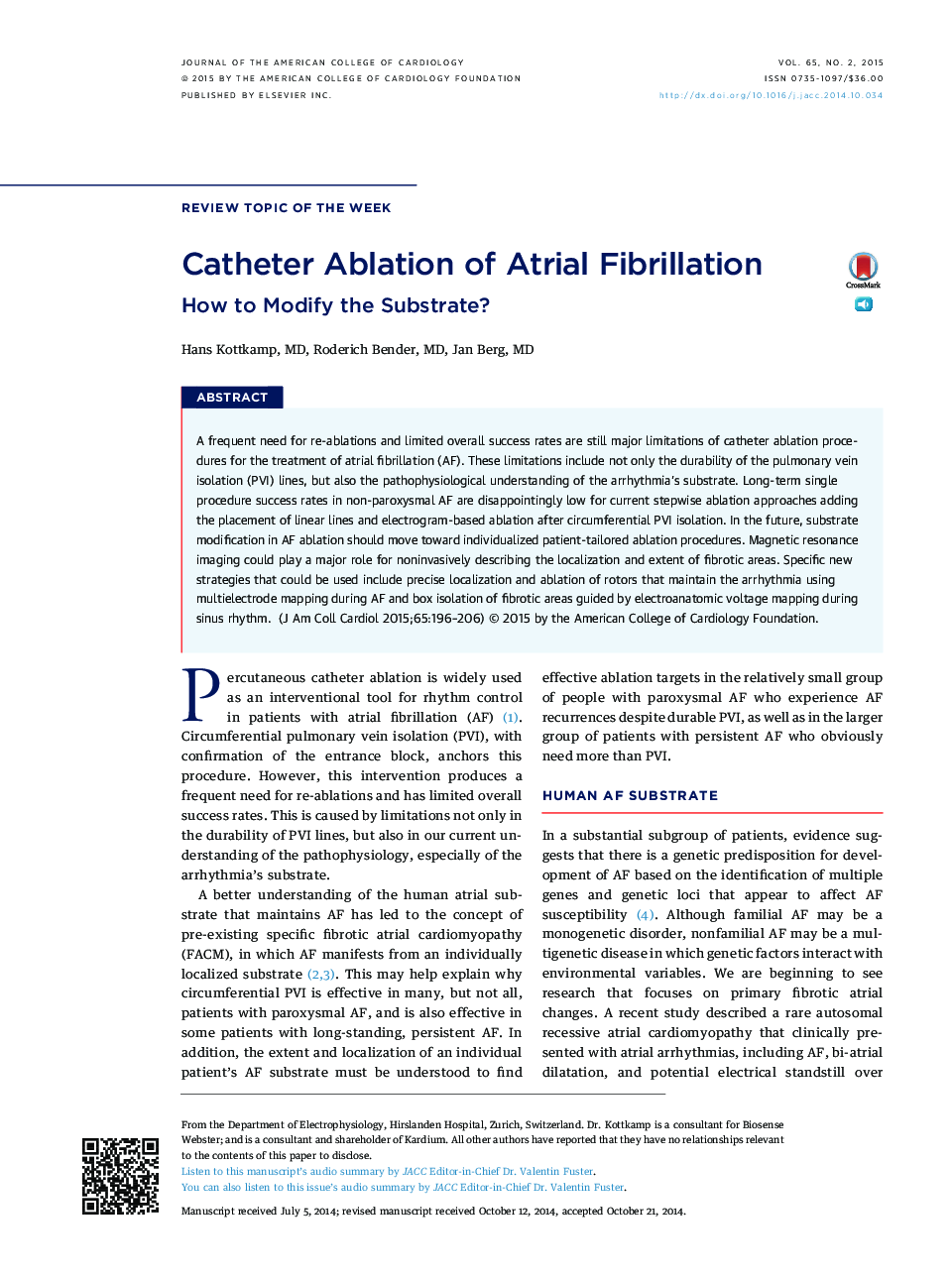| Article ID | Journal | Published Year | Pages | File Type |
|---|---|---|---|---|
| 2944239 | Journal of the American College of Cardiology | 2015 | 11 Pages |
A frequent need for re-ablations and limited overall success rates are still major limitations of catheter ablation procedures for the treatment of atrial fibrillation (AF). These limitations include not only the durability of the pulmonary vein isolation (PVI) lines, but also the pathophysiological understanding of the arrhythmia's substrate. Long-term single procedure success rates in non-paroxysmal AF are disappointingly low for current stepwise ablation approaches adding the placement of linear lines and electrogram-based ablation after circumferential PVI isolation. In the future, substrate modification in AF ablation should move toward individualized patient-tailored ablation procedures. Magnetic resonance imaging could play a major role for noninvasively describing the localization and extent of fibrotic areas. Specific new strategies that could be used include precise localization and ablation of rotors that maintain the arrhythmia using multielectrode mapping during AF and box isolation of fibrotic areas guided by electroanatomic voltage mapping during sinus rhythm.
